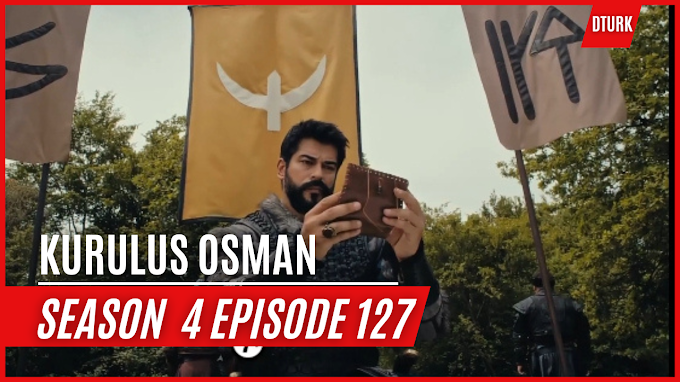Introduction to the Ottoman Empire
The Ottoman Empire was one of the most powerful and influential empires in history, spanning over six centuries and three continents. Understanding the Ottoman Empire family tree is crucial for comprehending the complex web of relationships that shaped this mighty dynasty. By delving into the family connections, we can gain a better understanding of the empire's rise, its key figures, and its ultimate downfall.
Importance of understanding the Ottoman Empire family tree

Photo by Clker-Free-Vector-Images on Pixabay
Studying the Ottoman Empire family tree is essential for historians, scholars, and enthusiasts alike. It provides a roadmap to the empire's history, shedding light on the intricate relationships that governed the political, social, and cultural dynamics of the time. By unraveling the family tree, we can trace the lineage of power, identify key players, and explore the impact of familial ties on the empire's decisions and policies.
Beyond the historical significance, understanding the Ottoman Empire family tree also offers insights into modern-day society. Many descendants of the Ottoman royal family still exist today, and their connection to this illustrious past provides a sense of identity and heritage. By exploring the family tree, we can bridge the gap between the past and the present, preserving the legacy of the Ottoman Empire for future generations.
Overview of the Ottoman Empire family tree
The Ottoman Empire family tree is a vast and intricate network that spans generations. At its core is the line of Osman I, the founder of the empire. Osman I was the patriarch of the Ottoman dynasty, and from him, all subsequent sultans descended. Understanding the lineage of Osman I is crucial for comprehending the origins of the empire and its early development.
From Osman I, the Ottoman family tree branched out, encompassing numerous sultans, princes, princesses, and other influential figures. Each branch of the family tree tells a unique story, with its own triumphs, tragedies, and political intrigues. Exploring these different branches allows us to gain a comprehensive understanding of the empire's inner workings and the family dynamics that shaped its destiny.
Key figures in the Ottoman Empire family tree
The Ottoman Empire family tree is replete with notable figures who left an indelible mark on history. One such figure is Sultan Suleiman the Magnificent, often regarded as the empire's most illustrious ruler. Sultan Suleiman's family tree is a testament to the empire's grandeur, with his marriage to Hurrem Sultan, also known as Roxelana, solidifying his place in history.
Another significant figure in the Ottoman Empire family tree is Ertugrul, the father of Osman I. Ertugrul's family tree traces the early beginnings of the empire and sheds light on the struggles and conquests that laid the foundation for its future glory. Additionally, Suleiman Shah, the grandfather of Osman I, played a pivotal role in the empire's formation, and his family tree intertwines with those of Ertugrul and Osman I.
The lineage of Osman I and the founding of the Ottoman Empire
Osman I, the founder of the Ottoman Empire, was a visionary leader whose lineage shaped the destiny of an empire. Born in the late 13th century, Osman I was the son of Ertugrul, the leader of a small Turkic principality. The family tree of Osman I is a testament to his noble heritage and the esteemed lineage from which he emerged.
Osman I's family tree includes his descendants, who went on to become the sultans and rulers of the Ottoman Empire. Each generation added a new chapter to the empire's story, expanding its territories, and leaving an indelible mark on history. The family tree of Osman I serves as a roadmap to the empire's growth and transformation, showcasing the strength and resilience of the dynasty.
The family tree of Sultan Suleiman the Magnificent
Sultan Suleiman the Magnificent, also known as Suleiman the Lawgiver, remains one of the most revered figures in Ottoman history. His family tree provides a glimpse into the personal life of this influential ruler and sheds light on the power dynamics within the empire.
Sultan Suleiman's family tree features his marriage to Hurrem Sultan, who rose from slave status to become one of the most influential women in the Ottoman Empire. Their union produced several heirs, including Prince Mustafa, who was destined to become Sultan, and Prince Selim, who eventually succeeded his father. Sultan Suleiman's family tree is a testament to the complexities of royal lineages and the challenges faced by those in power.
Exploring the descendants of Ertugrul and Suleiman Shah
Ertugrul, the father of Osman I, played a vital role in the founding of the Ottoman Empire. His family tree intertwines with that of Osman I, tracing the lineage back to its origins. Exploring the descendants of Ertugrul allows us to understand the struggles, triumphs, and conquests that shaped the empire's early years.
Similarly, Suleiman Shah, the grandfather of Osman I, has a family tree that connects with the broader Ottoman Empire lineage. Suleiman Shah's contributions to the empire's formation and the subsequent reign of Osman I cannot be understated. By exploring the family trees of Ertugrul and Suleiman Shah, we gain a deeper appreciation for the empire's roots and the historical forces that shaped its destiny.
The last Ottoman sultan and the end of the empire
The family tree of the Ottoman Empire culminates with the last sultan, Mehmed VI. As the empire faced political turmoil and external pressures, Mehmed VI found himself at the center of a changing world. Tracing the family tree of Mehmed VI illuminates the challenges faced by the Ottoman dynasty in its final years and the ultimate dissolution of the empire.
The family tree of Mehmed VI also highlights the shifting power dynamics within the empire, as well as the influence of external forces. The end of the Ottoman Empire marked the conclusion of a centuries-long reign, and understanding the family tree of its last sultan allows us to reflect on the empire's decline and the forces that shaped its fate.
Tracing the Ottoman family tree today
While the Ottoman Empire no longer exists in its original form, its legacy lives on through the descendants of the royal family. Tracing the Ottoman family tree today allows us to bridge the gap between the past and the present, preserving the empire's heritage for future generations.
Many descendants of the Ottoman royal family continue to carry the torch of their ancestors, cherishing their rich history and cultural legacy. By exploring the family tree and connecting with the descendants, we can gain a firsthand account of the empire's lasting impact and the ways in which its legacy continues to shape contemporary society.
Conclusion: Reflecting on the legacy of the Ottoman Empire family tree
The Ottoman Empire family tree is a testament to the power, influence, and complexity of one of history's greatest dynasties. By unraveling the intricacies of this family tree, we gain a deeper understanding of the empire's rise, its key figures, and its ultimate downfall. Tracing the lineage of Osman I and exploring the family trees of notable figures such as Sultan Suleiman the Magnificent and Ertugrul allows us to connect with the past and appreciate the lasting legacy of the Ottoman Empire.
Understanding the Ottoman Empire family tree also offers insights into modern-day society, as many descendants of the royal family still exist today. By tracing the family tree in the present, we can bridge the gap between the past and the present, preserving the empire's heritage for future generations. The Ottoman Empire family tree stands as a testament to the enduring power of familial ties and the indelible mark left by one of history's most influential empires.





